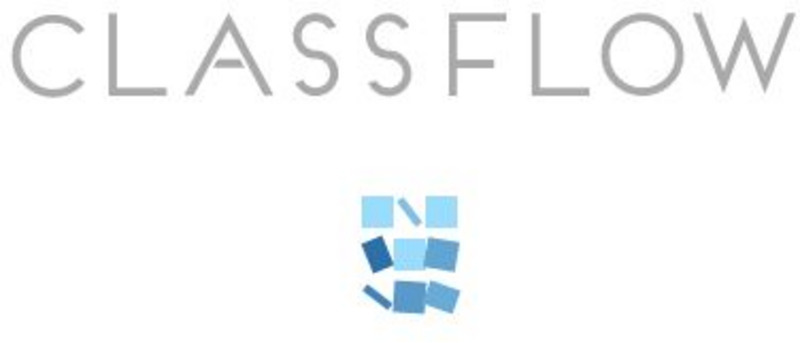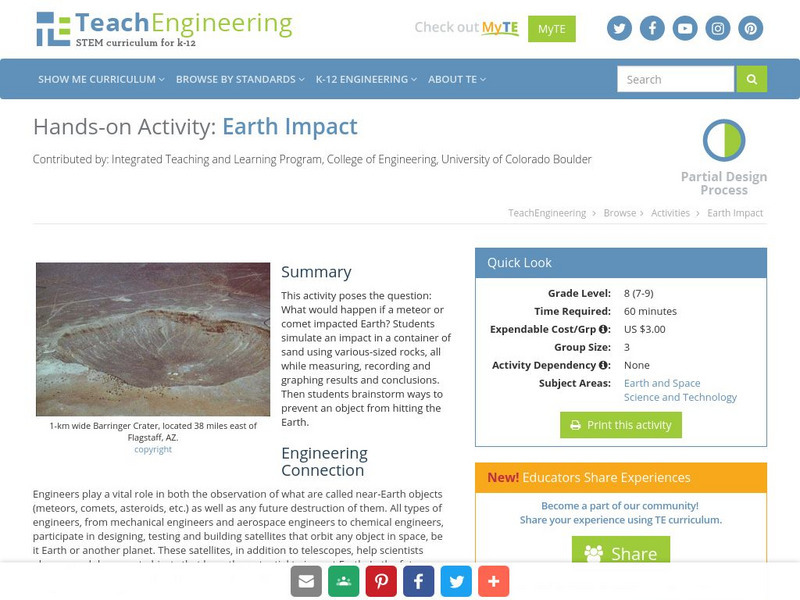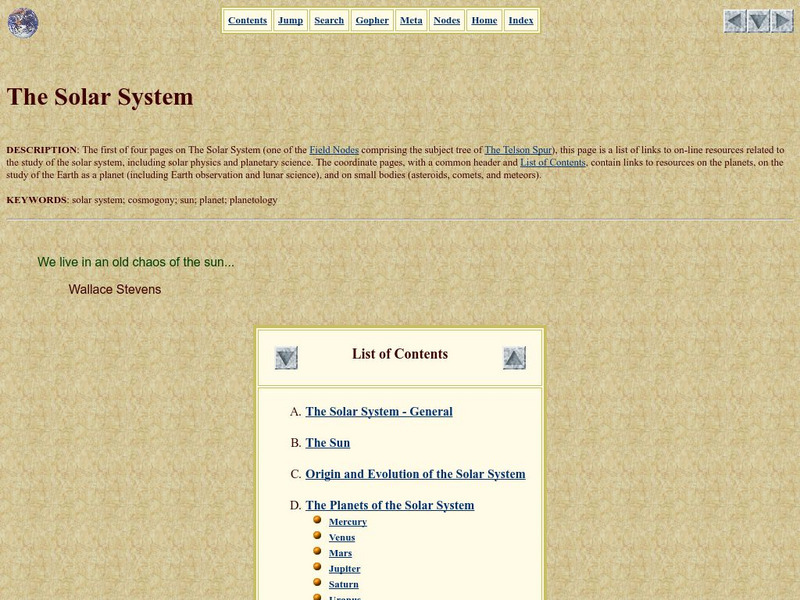NASA
Nasa: Asteroids: Overview: Ancient Space Rubble
Comprehensive look at asteroids, with many useful facts, photos, and related links. Provides a detailed account of how asteroids get their names and a timeline of significant dates.
Nine Planets
The Nine Planets: Comets
A detailed description of comets, their distinct parts, and the known comets in our solar system. Links are also provided for additional information on related subjects.
ClassFlow
Class Flow: Asteroids, Meteoroids, and Comets
[Free Registration/Login Required] In this flipchart students will compare and contrast asteroids, meteoroids, and comets. They will also learn about their origins. Assessment questions are included.
PBS
Nova: Doomsday Asteroid Hale Bopp & Hyakutake
NOVA provides a report on comet Hale-Bopp and comet Hyakutake. Content includes discovery and observational information.
Massachusetts Institute of Technology
Mit: Open Course Ware: Earth, Atmospheric and Planetary Sciences: Solar System
A university-level course that looks at the structure of the solar system, the sun, the planets, and other bodies in space. Includes course readings, assignments, and study notes.
Teachers TryScience
Teachers Try Science: Comet Cratering
Use marbles to discover how comets and asteroids make impact craters. This hands-on experiment is easy to do and gives you many variations to try. Included are links to additional information.
E-learning for Kids
E Learning for Kids: Science: Antarctica/ What Are the Different Parts of the Universe?
In this lesson, students learn about objects in the universe, including constellations, planets, meteors, asteroids, and comets.
Sophia Learning
Sophia: Asteroids, Comets and Meteors
A brief vocabulary overview describing the difference between asteroids, comets, and meteors.
Other
Space weather.com
Want to know what the current weather conditions are in space? Find everything here you may want to know about the latest solar flares, sunspots, asteroids and more. Site also includes essential web links to quench any user's thirst for...
TeachEngineering
Teach Engineering: Linear Equations Game
Students groups act as aerospace engineering teams competing to create linear equations to guide space shuttles safely through obstacles generated by a modeling game in level-based rounds. Each round provides a different configuration of...
NASA
Nasa: What Is a Planet?
This lesson teaches students about the characteristics of planets, comets, asteroids, and trans-Neptunian objects. After learning about these different things, students then are to debate about a new object that is found in space.
NASA
Nasa: Our Solar System Lithograph Set
View a lithograph set that includes pictures and brief descriptions of planets, sun, asteroids, comets, meteors, and meteorites. While viewing the lithograph learn important dates and interesting facts about our solar system.
Enchanted Learning
Enchanted Learning: Zoom Astronomy: All About Space
A fantastic collection of information about the solar system. Includes information on all of the planets, the moon, the sun, asteroids, comets, meteoroids, and stars. Also find puzzles, a dictionary, quizzes, classroom activities, and...
Other
Kid Power: Astronomy for Kids
Young children can find facts about the Solar System, the Sun, meteorites, stars, galaxies, planets, our moon, comets, asteroids, and space exploration. Pages offer clear photos and bullet-point information, which is easy to read and...
National Earth Science Teachers Association
Windows to the Universe: Our Solar System
Our solar system is filled with a wide assortment of celestial bodies - the Sun itself, our eight planets, dwarf planets, and asteroids - and on Earth, life itself! The inner solar system is occasionally visited by comets that loop in...
NASA
Nasa Star Child: Star Child
StarChild from NASA defines and describes the Solar System in a simple and easy-to-understand manner. The website is broken down into two versions for the student, grade school and junior high.
ClassFlow
Class Flow: Asteriods, Comets and Meteriods
[Free Registration/Login Required] In this flipchart students will learn basic facts about Asteroids, Comets and Meteoroids.
NASA
Nasa: Solar System
This resource provides a general overview of all the planets in the solar system, as well as the sun, various comets and asteroids, the deep space network, and the latest solar system news.
Georgia Department of Education
Ga Virtual Learning: Our Solar System
This interactive tutorial will take students on a tour of our solar system. Students begin near the Sun with the really hot planets of Mercury and Venus. They will learn about Mars, probably the first planet that humans will visit. Next...
NASA
Nasa Space Science Data Archive: Galileo Project Information
This is the homepage of all of the archived information about and from the Galileo Mission. Included is data from the flybys of Venus, Earth, Moon, and Asteroids Gaspra and Ida, as well as the current data from Jupiter and its moons. See...
Virginia Tech
Virginia Polytechnic Institute: Greenhouse Dinosaur Extinction Theory
This comprehensive page discusses the Asteroid Impact vs. Volcano-Greenhouse dinosaur extinction debate. It was written by paleontologist, professor, and scientist Dr. Dewey McLean.
TeachEngineering
Teach Engineering: Earth Impact
This activity poses the question: What would happen if a meteor or comet impacted Earth? Students simulate an impact in a container of sand using various-sized rocks, all while measuring, recording and graphing results and conclusions....
NASA
Nasa Space Science Data Archive: Photo Gallery: Galileo
A well-indexed collection of NASA images taken by the Galileo spacecraft. Images include the spacecraft itself prior to launch and all of the solar system objects this incredible mission has visited.
Other
The Telson Spur: The Solar System
This is a list of links to online resources related to the study of the planets. It has a literary theme associated with the Lewis Carrol poem "The Hunting of the Snark" with many quotes from literature and science. Navigation tools...




















